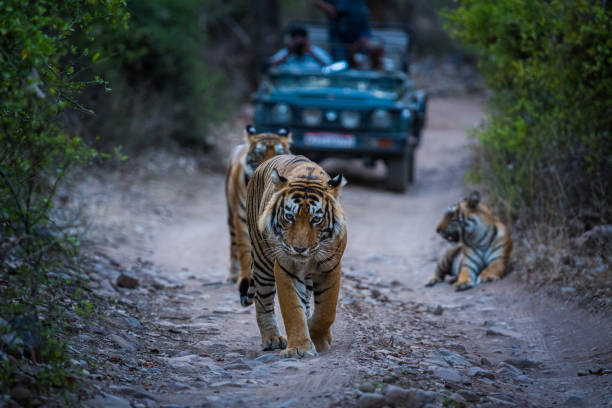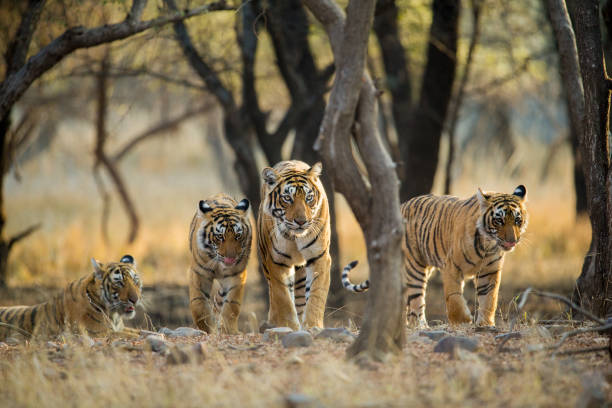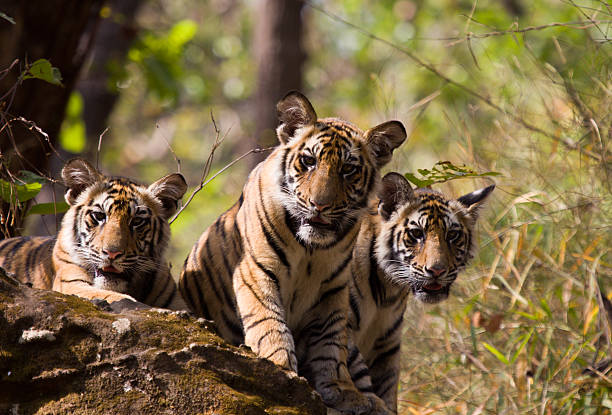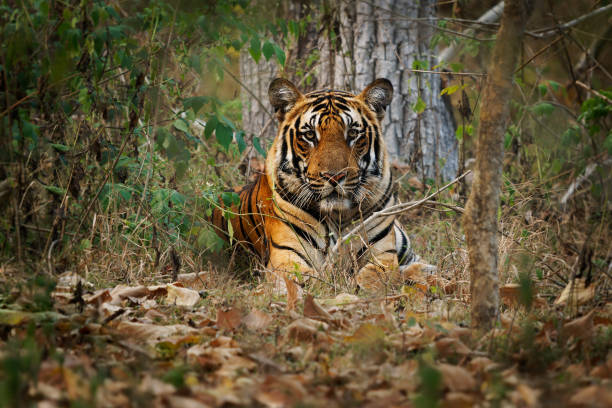Enter this verdant, natural area, where each step reveals a new marvel and each breath captures the spirit of the symphony of nature. There is a world ruled by magnificent kings called tigers, tucked away amid the tall trees that whisper old secrets and the shadows that move in time with the wind. These amazing animals are more than just the occupants of the jungle; they are its heart and soul, with a grace that rivals the swing of trees and a strength that reverberates through the very soil. They have a holy mission to protect the forest and maintain the equilibrium of their domains by assiduously weaving themselves into the complex web of life.

Tigers: Symbols of Power and Grace
Imagine a solitary tiger, a monarch of the jungle, weaving through the labyrinth of foliage, its gaze ablaze with wisdom born of centuries. Each fluid motion speaks of primal strength and elegance intertwined. Tigers, enigmatic and noble, have forever held humanity in their thrall, embodying courage, resilience, and enigma. Yet, their significance transcends mere fascination; they are architects of their realms, their existence intricately woven into the delicate web of life, ensuring the harmony and vitality of their habitats.

The Keystone Predators: Balancing Act in the Wild
Within the intricate tapestry of existence, each creature holds a unique thread, yet some emerge as linchpins, weaving the very fabric of their world. Tigers, crowned sovereigns of their domains, epitomise this truth with resounding importance. As apex predators, they orchestrate a delicate symphony, their presence dictating the ebb and flow of life. By curbing the abundance of prey, they cultivate balance, nurturing the verdant tapestry of forests. In their silent reign, tigers craft a sanctuary where biodiversity flourishes, ensuring the resilience of their shared home.

Engineers of the Landscape: Shaping Habitats
Beyond their role as regulators of prey populations, tigers also act as engineers of the landscape. Through their hunting behaviour, they create pathways and clearings in dense forests, promoting the growth of new vegetation and enhancing habitat diversity. Moreover, their presence influences the behaviour of herbivores, altering their grazing patterns and thus, indirectly shaping the landscape. In essence, tigers sculpt their environment, leaving an indelible mark on the ecosystems they inhabit.

Guardians of Genetic Diversity
In addition to their ecological significance, tigers contribute to the genetic variety of their habitats. As apex predators, they select for certain features in prey populations, exerting evolutionary pressure that promotes adaptation and diversification. Tigers keep prey species genetically healthy by preying on the weakest individuals, maintaining their resilience in the face of environmental adversities. In this approach, tigers protect the genetic diversity required for ecosystem persistence over time.

Conservation Imperative: Ensuring the Survival of Tigers and Ecosystems
Tigers are fierce protectors of the wild in the delicate dance of life, yet they also endure many difficulties in their noble role. Human endeavours encroaching on their sanctuaries cast a shadow over their hitherto limitless kingdoms. However, a glimmer of hope can be seen amidst this battle. To protect these magnificent animals, diligent conservationists fight from coast to coast. They bind together the shattered strands of ecosystems, reduce hostilities, and seal the scars left by illicit poaching. By protecting tigers, we foster the very fabric of life's intricate web, in addition to safeguarding a representation of wild beauty.
Every strand is vital in the complex fabric of nature, and tigers are the golden threads that hold it all together. They represent the delicate balance that keeps life on Earth alive as the protectors of the forest. By cherishing and preserving these amazing animals, we are preserving the very essence of wildness.

